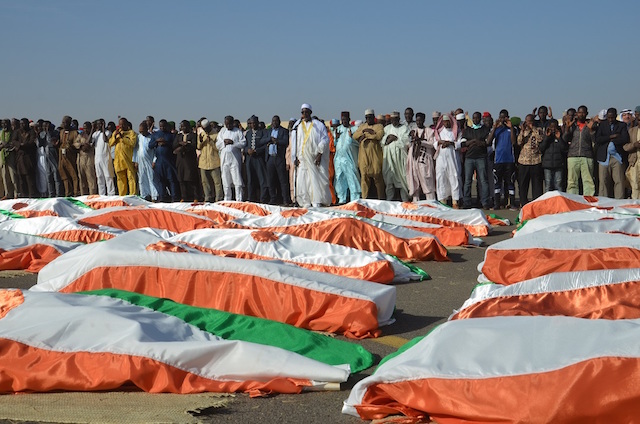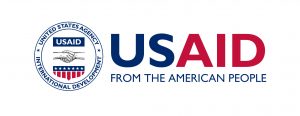Behind the Jihadist Attack in Inates

A shocking attack by an Islamic State affiliate has killed more than 70 Nigerien soldiers, the most ever in a single incident. Crisis Group expert Hannah Armstrong explains that the jihadists’ strength is rooted in decades-old communal grievances in the Mali-Niger border zone.What happened in Niger?On 10 December, assailants struck a Nigerien military camp close to the settlement of Inates on the border with Mali, killing more than 70 soldiers in the deadliest attack on security forces in the country’s history. The Islamic State’s affiliate in Mali and Niger claimed responsibility for the attack. Its fighters reportedly used mortars and kamikaze vehicles to storm the base. In its statement, the Islamic State said it had captured weapons, ammunition, vehicles and even “a number of tanks”. This claim could not be independently confirmed.The attack by the Islamic State affiliate, which has escalated its campaign in the area around Inates since April, is part of an emerging trend of large-scale jihadist operations against military outposts in the central Sahel. On 30 September, almost simultaneous attacks on a Malian military unit at Mondoro and a Malian battalion of the regional G5 Sahel Joint Force at Boulikessi, both near the border between Mali and Burkina Faso, killed at least 40 – mainly soldiers – and left more than 60 people missing. The Group to Support Islam and Muslims (GSIM), which comprises several jihadist groups affiliated with al-Qaeda, claimed these attacks. Just weeks later, on 1 November, Islamic State militants also killed more than 50 Malian soldiers in an assault on the Indelimane base on the Mali-Niger border. As a result, the Malian military retreated from Indelimane, as well as two other strategic frontier posts at Labbezanga and Anderamboukane, leaving Nigerien forces more vulnerable to infiltration and attacks from across the border.Although ethnic groups have competed for decades over rights and resources in the Mali-Niger border zone, fighting there has risen to unprecedented intensity over the past several years… Why do jihadist groups have such a grip on the area around Inates? The area around Inates is fertile ground for the Islamic State and GSIM, which have exploited longstanding grievances among and within nomadic communities that straddle the Mali-Niger border.Since the 1990s, these local tensions have fuelled cycles of violence in the border zone, with young men from the Tuareg, Daosahak and Peul ethnic groups protesting their neglect by the state but also increasingly taking up arms to pursue their disputes with each other. In 2012, a chiefly Tuareg separatist Malian rebel group, the National Movement for the Liberation of Azawad (known by the French acronym MNLA) armed young Tuareg and Daosahak men, while a coalition of jihadists took control of Mali’s Gao region, welcoming Peul fighters into its ranks. As the MNLA and jihadists vied for influence among the Tuareg and Daosahak, cracks appeared within these communities, with some choosing the jihadists’ side. These historical communal divisions have continued to provide entry points for the Islamic State and GSIM to exploit local rivalries and recruit from among the disaffected.The introduction of military operations in this milieu has made things worse. As discussed in a June 2018 Crisis Group report, local communities in the border area, armed and mobilised as far back as the 1990s, have now become increasingly polarised and warlike amid recent military operations because they are often forced to choose between siding with the state or with jihadists. In May 2017, faced with the Islamic State threat emanating from Mali, authorities in the Nigerien capital Niamey initiated cooperation with Malian Tuareg and Daosahak armed groups, the Imghad Tuareg Self-Defence Group and Allies (GATIA) and Movement for the Salvation of Azawad (MSA), both of which have ties to the Malian government and drew upon France’s military venture in the Sahel, known as Operation Barkhane, for support. Their sweeps in North Tillabery (the region surrounding Inates) seemed to halt the jihadist threat in the short term but also caused tit-for-tat ethnic massacres and drove even more Peul and other fighters to ally with the Islamic State. Niger suspended its operations in July 2018, as did France, realising that they had backfired.As the jihadist groups have implanted themselves deeper into communal conflicts, they have developed systems of coercion and control over populations that Sahelian governments struggle to cope with by military means. With allies in all three major nomadic ethnic groups, jihadists have thus been able to set up effective informant networks, which help them intimidate local civilians – who might otherwise report on their movements to state security forces – with the threat of reprisal. While the jihadists attack those who collaborate with the state, they have generally been careful not to target civilians, winning them a level of trust that is difficult for the state to match. When they do attack, the jihadists appear to come out of nowhere, swarming around their targets on motorbikes and then melting back away. They also avoid occupying any territories where they could be easily identified and thus become ready targets themselves. With Nigerien and other military forces so spread out, and so isolated, they may be facing a war they cannot win.How have communal tensions unfolded in Inates?Although ethnic groups have competed for decades over rights and resources in the Mali-Niger border zone, fighting there has risen to unprecedented intensity over the past several years, with armed factions keen to control valuable cross-border trafficking routes. Inates is a sparsely populated commune that was home to roughly 30,000 people from more than 50 tribes – mainly Tuareg but also Peul – before fighting in 2018 set off waves of internal displacement. It has now become a particular target for regional jihadist groups.Since mid-2018, two events in particular have driven a wedge between Tuareg and Peul in Inates and the state, allowing the jihadists to entrench their interests further. First, in May of that year, Tuareg fighters allegedly killed seventeen Peul in a mosque in the village of Aghay. Villagers believe that the killers belong to the GATIA militia and were retaliating for the deaths of seventeen Tuareg at the hands of Peul militants in Mali weeks earlier. The massacre led Inates Peul fighters to join jihadist units opposed to the militia. Many local Peul perceived the Nigerien state as complicit in the massacre. Secondly, that November, the state captured an Inates-based Tuareg jihadist with close links to both Islamic State and GSIM. It is widely believed that the Tuareg chief of Inates informed on him.Militants thereafter declared war on the Inates chieftancy and, in April 2019, Islamic State militants assassinated the chief. Four other members of the Inates chieftaincy were killed when their vehicle struck a mine on the way to his funeral. Three months later, in July, Islamic State gunmen assassinated the chief’s successor, a National Guard veteran with alleged links to the intelligence services. That same month, Islamic State militants raided the military post at Inates in their most complex attack to date, using two suicide vehicles to gain entry and killing eighteen soldiers inside.In barely a year, Inates had therefore gone from a little-known and long-neglected border zone to featuring prominently in a glossy Islamic State publication. The Nigerien state attempted to extend patronage to the Tuareg and Peul by absorbing young men into the armed forces, but this effort has served to further provoke the Islamic State. Nigerien authorities quietly recruited dozens of Tuareg and several Peul from Inates and sent them away for training. Families claimed that their young men had gone off to search for jobs, but word of the special recruitment got back to the jihadists. In a message claiming the assassinations of the Inates chiefs, who hailed from the Tuareg Imouchagh, the Islamic State’s newsletter al-Naba stated that it was aware of the recruitment of Imouchagh into the security forces and noted that it had repeatedly warned them to stop cooperating with the authorities. In barely a year, Inates had therefore gone from a little-known and long-neglected border zone to featuring prominently in a glossy Islamic State publication.What could be the consequences for the border region and for Niger?With its military positions under heavy fire, the Nigerien state is being forced to retreat. The jihadist offensive could prompt the Nigerien armed forces to abandon isolated outposts such as the one at Inates and concentrate forces in more populated areas. With the Malian state also absent on the other side of the border, the zone is at risk of becoming a no-man’s land under the custodianship of a rural jihadist insurgency, with residents more or less held hostage. Meanwhile, the outlook for dialogue with the Islamic State’s local affiliate remains bleak, with the group seemingly emboldened by its military successes. Niger and the commanders of Operation Barkhane should not think that by returning to the use of proxy militias to go against the Islamic State and its local allies, they can remotely defeat them. Doing this would more likely aggravate communal conflicts even further and give the Islamic State more opportunities to expand its foothold in North Tillabery. Already, six village chiefs have been assassinated in Tillabery this past November, as Islamic State influence spreads among not only Peul but also Tuareg, Daosahak and even Djerma communities.Niger courageously initiated dialogue attempts with the Islamic State’s Sahelien leader Abou Walid al Sahraoui in 2016, but these were beset by obstacles, as Crisis Group will explore in a forthcoming report. A useful next move for Niger might be to begin looking for ways to resolve the grievances of ethnic groups and address the reasons for their disenchantment with the state. Without exposing locals to jihadist suspicions of collusion with Niamey, the authorities could discreetly accelerate dialogue with nomadic leaders from Inates. This measure, in itself, will not solve the problems created by the presence of jihadist groups but it could be a step toward calming local tensions that the militants exploit.Analysis by: Hannah Armstrong , Consulting Analyst, Sahel Region, for International Crisis Group






